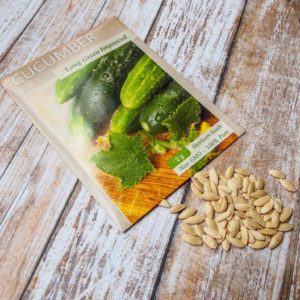July is often the month where gardens across the country begin to burst with colors and produce fruits and vegetables at a rate that is hard to keep up with. It’s also the month where a garden that hasn’t been receiving proper care will begin to show the effects of negligence. Come July, the sun is at it’s most intense stage of the year, the amount of sunshine is at it’s longest, and heavy winds and rain can pop up out of nowhere with summertime squalls and thunderstorms dotting the horizon. Follow these six tips on how to keep your garden healthy this summer so it will continue to produce for you through the rest of the season, and late into the fall!
Water, Water, Water
While conventional thought would lead us to believe that our garden needs TONS of water during the summertime heat, that is not always the case. The best way to check if your garden needs to be watered is to stick your finger down into the soil, about an inch or two, and if the soil feels dry, it’s time to water. Especially in the summer, it’s important that the water the garden receives is being absorbed down into the garden bed where it’s safe from evaporation. It’s also important to avoid watering during the middle of the day, when the sun is most intense. If water droplets have collected on the leaves and stem, they can have magnifying effects on the sun, causing plants to burn.
Look to Indicator Plants
Most summertime vegetable gardens have staples such as zucchini squash or cucumbers. These broad-leaved vegetables are excellent indicators for the home gardener as to when their garden is in need of a watering. Because these types of vegetables have such large leaves, you’ll be able to see a visible “wilting” in the leaves and vines. Don’t worry though; once your garden receives the water it needs, the plants will recover quite quickly with no harm to their growth.

Throw Some Shade on Your Garden
If you followed all the rules of putting your garden in an area of your home that receives full sun, this is a tip for you! Believe it or not, it is possible for your plants to receive too much sun, especially vegetables plants. Once temperatures reach over 90 degrees, many vegetables will struggle to continue to produce fruits. There are dozens upon dozens of types of sun shade for your garden to choose from, just be sure to leave enough room above them for continued growth and airflow. For summer cabbages, it’s ok to lay the fabric right on top of the crop, but for tomatoes, peppers, and other plants growing vertically, be sure to support the fabric from above to avoid any disasters!
Keep Fighting off Weeds
It’s a year-round battle to keep weeds from taking up a residence in your garden, but pulling weeds takes an even greater level of importance in the summer. Weeds are opportunists, growing in spots that are nutrient and water rich, with root systems that are designed to “rob” your plants of the moisture and minerals they need to grow. Either early in the morning, or late in the day, after the sun is done beating down on your garden, head out and pull as many weeds as you can to give your garden the best shot at thriving through the summertime.
Give Your Mulch a Boost
Mulching your garden is a vital part of ensuring your garden retains water and provides your plants with an inviting environment to grow and produce. In many cases, home gardeners overlook the mulch that was spread early in the growing season and forget to supplement their beds with fresh mulch. Mulch is designed to break down over time and provide nutrients directly to the soil, so after a few months of growth, your garden will benefit from a fresh layer of mulch! Not only will the fresh mulch provide additional nutrients over time, but it will aid in water retention by keeping the moist soil cool and shaded, as well as keep weeds at bay.

Begin Planning for Fall Crops
Now is the time to start any crops you’d like to add to your garden for a fall harvest. Candidates for a fall harvest include plants like cabbage, kale, and lettuce, and also include root vegetables like garlic and parsnips that can be left in the ground until the following spring! Find space in your garden where a previously plant has died or underperformed, and remove it and begin to amend the soil to prepare for some cool weather crops to move in. Adding an organic compost will help to replace the nutrients from the soil that the previous plant may have used up during it’s growth.